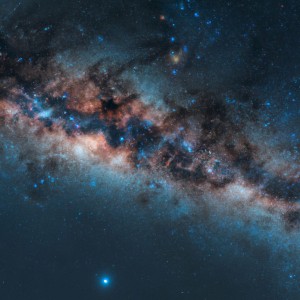The operation of the universe is a fascinating subject that has intrigued mankind for centuries. There are a number of different theories and models that attempt to explain how the universe works, each with their own strengths and weaknesses. Here are some of the most popular models:
1. The Big Bang Theory

The Big Bang Theory is the most widely accepted model for the origin and structure of the universe. This theory suggests that the universe was formed around 13.7 billion years ago from a single point of extremely high density and temperature, which exploded in a massive explosion known as the Big Bang. This explosion created all the matter and energy in the universe, which then expanded outwards from the point of origin. The universe has been expanding and cooling ever since.
2. The Steady-State Theory
The Steady-State Theory was once a popular alternative to the Big Bang Theory, but is no longer considered a valid model for the universe. This theory suggests that the universe has always existed and will always exist, and that new matter is constantly being created to replace that which is lost due to the expansion of the universe. This model proposes that the universe is infinite and eternal, and that the density and structure of the universe are constant over time.
3. The Oscillating Universe
The Oscillating Universe theory suggests that the universe goes through endless cycles of expansion and contraction. According to this model, the universe is initially formed from a Big Bang, expands until it reaches a certain point, and then begins to contract until it reaches a point of extreme density where it collapses in on itself. This collapse leads to another Big Bang and the formation of a new universe, and the cycle begins again.
4. The Inflationary Universe
The Inflationary Universe theory suggests that the universe underwent a period of rapid expansion shortly after the Big Bang. This period of inflation lasted for only a tiny fraction of a second, but it was enough to create the large-scale structure of the universe we see today. This model explains some of the inconsistencies in the Big Bang theory, such as the uniformity of the universe and the existence of large structures.
5. The Dark Matter Theory
The Dark Matter Theory proposes that the universe is made up of vast quantities of invisible matter, known as dark matter. While dark matter cannot be detected directly, its effects can be observed, such as the gravitational forces that it exerts on visible matter. This theory suggests that dark matter makes up around 27% of the total matter in the universe, and that it plays a vital role in the structure and evolution of galaxies.
In conclusion, there are a number of different theories and models that attempt to explain how the universe operates. While some of these models have fallen out of favor or have been disproven, others continue to be studied and debated by scientists and experts around the world. Understanding the complexities of the universe is an ongoing process, and there is still much more to discover and explore in the years to come.













评论